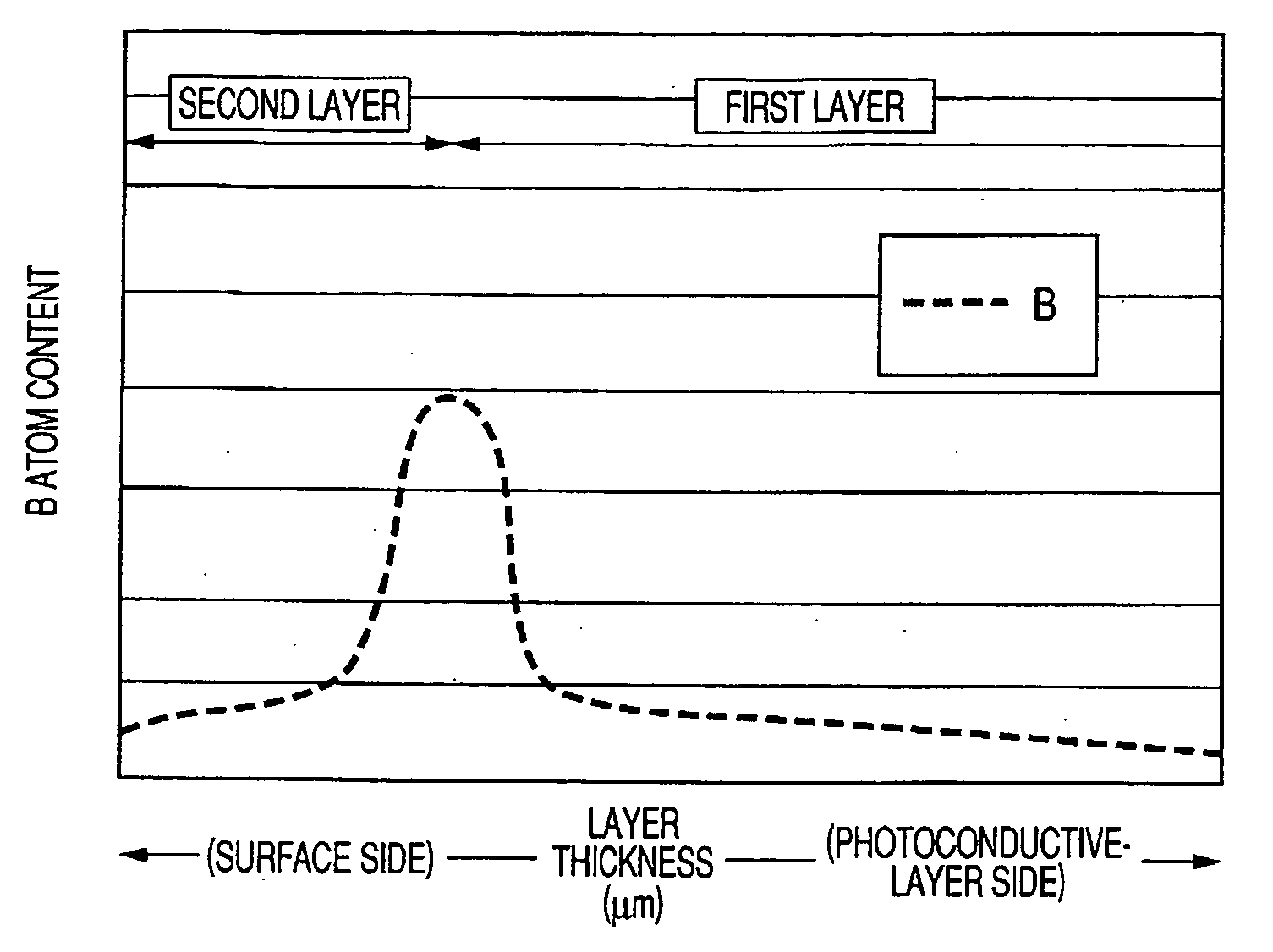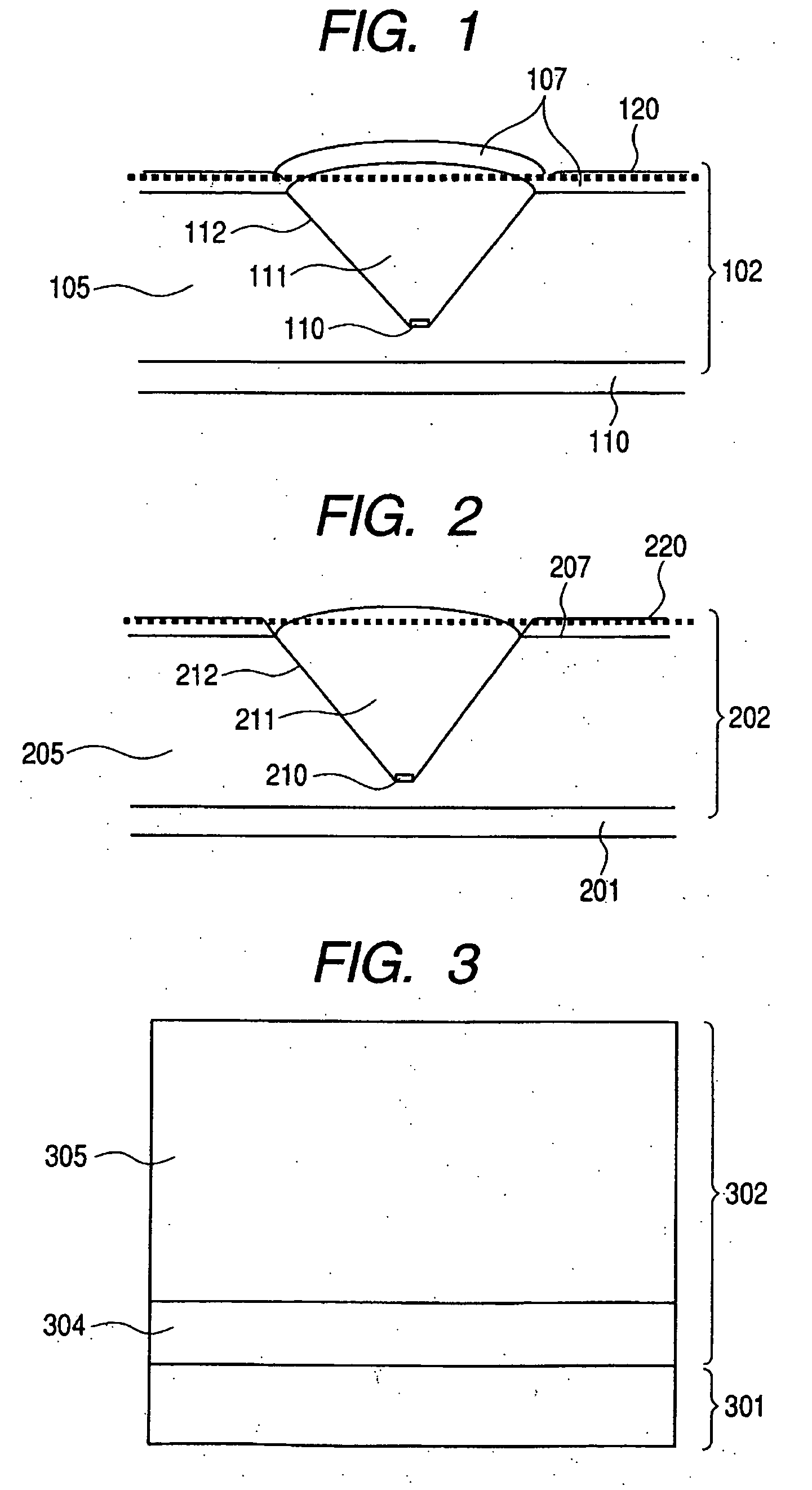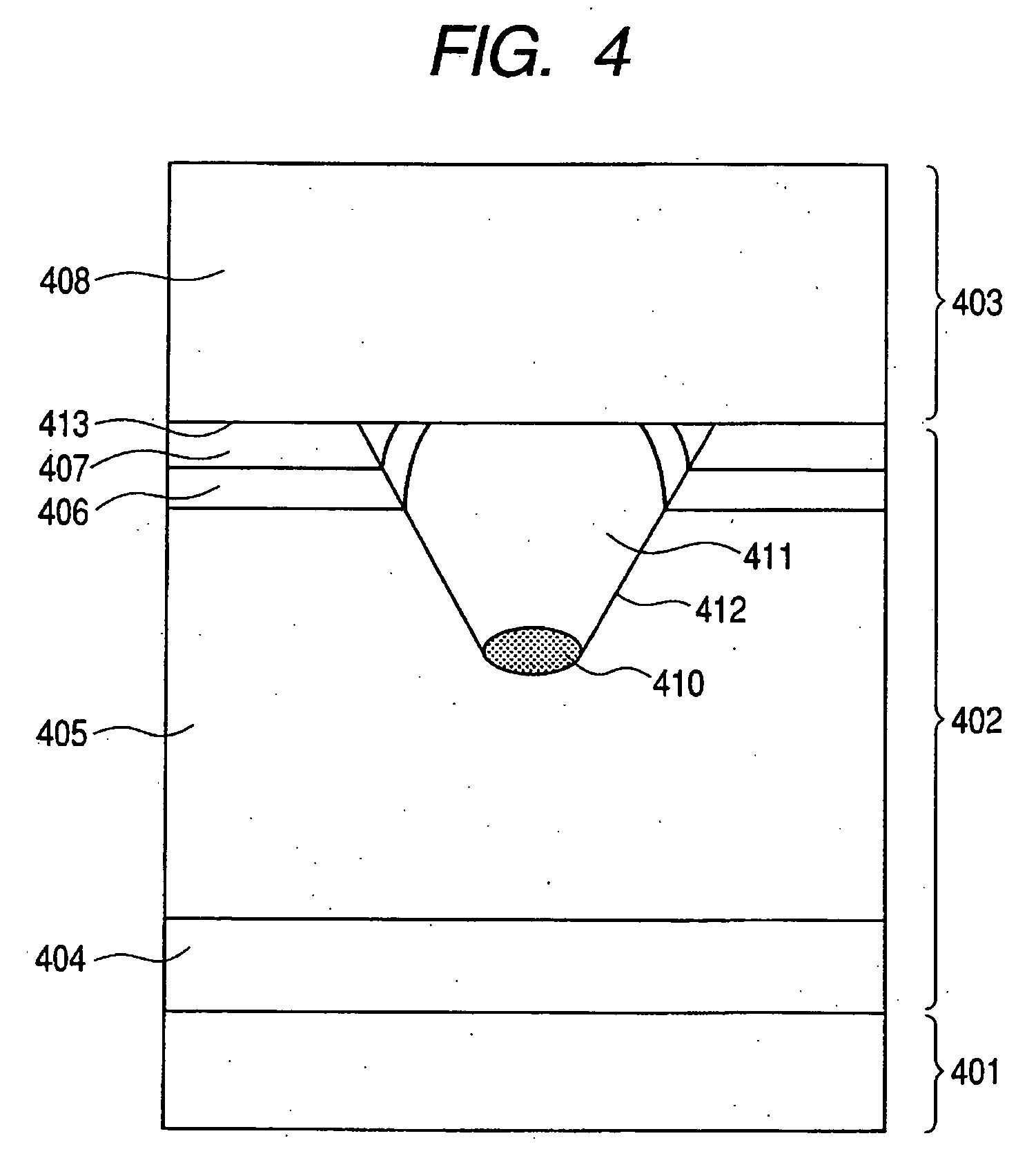Process for producing negative charging electrophotographic photosensive member, negative charging electrophotographic photosensitive member, and electrophotographic apparatus using same
a technology of electrophotographic photosensitive and electrophotographic photosensitive parts, which is applied in the direction of electrographic process apparatus, optics, instruments, etc., can solve the problems of low mutual adhesion between layers, achieve the effect of improving adhesion, reducing image defects, and simplifying film forming steps
- Summary
- Abstract
- Description
- Claims
- Application Information
AI Technical Summary
Benefits of technology
Problems solved by technology
Method used
Image
Examples
example 1
[0135] Using the a-Si photosensitive member film forming apparatus shown in FIG. 5, which is of an RF plasma-assisted CVD system, a lower-part blocking layer formed of at least a non-single-crystal material and a photoconductive layer formed of at least a non-single-crystal material were deposited as the first layer on an aluminum substrate of 80 mm in outer diameter under conditions shown in Table 1. Thereafter, the substrate with the first layer deposited thereon was taken out of the film forming furnace to expose it to the atmosphere, and thereafter subjected to polishing to remove protuberances at least at their vertexes on the first layer surface, and then to the treatment of bringing the first layer surface into contact with water. Thereafter, the substrate with the first layer deposited thereon, which had been processes in this way, was placed in the film forming furnace, and, before the second layer was deposited, subjected to plasma treatment in which, as to the boron conte...
example 2
[0144] According to the procedure of Example 1, which was changed only in that the treatment of bringing the first layer surface into contact with water was not carried out, a negative-charging electrophotographic photosensitive member was produced under conditions shown in Table 5. In respect of costs, the adherence between layers, polishing mars, chargeability, image defects and potential non-uniformity, evaluation was made in the manner as described below. Results obtained are shown in Table 18.
example 3
[0145] According to the procedure of Example 1, which was changed only in that in the first layer, the upper-part blocking layer formed of at least a non-single-crystal material was additionally deposited, a negative-charging electrophotographic photosensitive member was produced under conditions shown in Table 6. In respect of costs, the adherence between layers, polishing mars, chargeability, image defects and potential non-uniformity, evaluation was made in the manner as described below. Results obtained are shown in Table 18.
PUM
 Login to View More
Login to View More Abstract
Description
Claims
Application Information
 Login to View More
Login to View More - R&D
- Intellectual Property
- Life Sciences
- Materials
- Tech Scout
- Unparalleled Data Quality
- Higher Quality Content
- 60% Fewer Hallucinations
Browse by: Latest US Patents, China's latest patents, Technical Efficacy Thesaurus, Application Domain, Technology Topic, Popular Technical Reports.
© 2025 PatSnap. All rights reserved.Legal|Privacy policy|Modern Slavery Act Transparency Statement|Sitemap|About US| Contact US: help@patsnap.com



